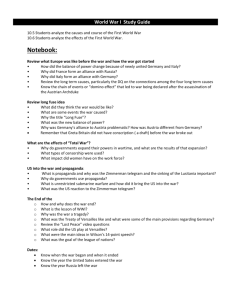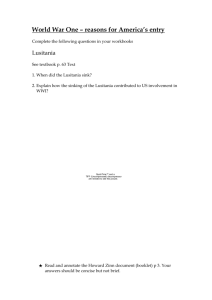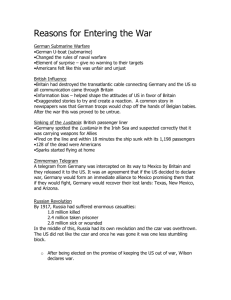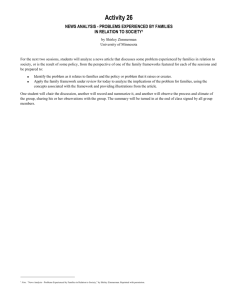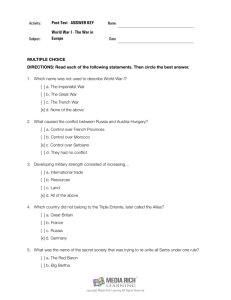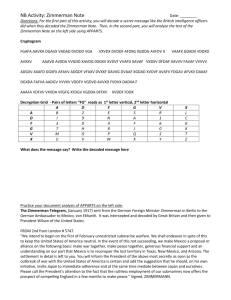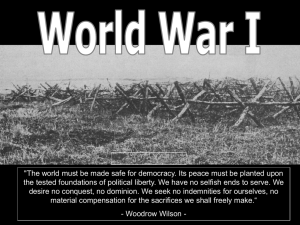The Eastern Front
advertisement
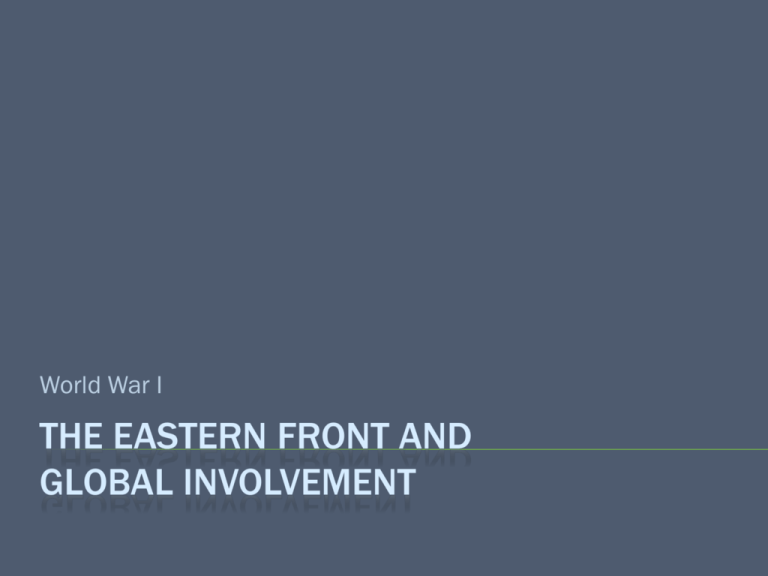
World War I THE EASTERN FRONT AND GLOBAL INVOLVEMENT LOCATION Longer than the Western Front No stalemate like the Western Front, but just as deadly Trenches never really developed, more fluid troop movement 1000 miles long, so troop density was lower BATTLE OF TANNENBERG 1914 Germany vs. Russia—almost destroyed the Russian army Happened at the same time as the Germans were losing the Battle of the Marne in France Kept Russia at bay the rest of the war Russian retreat resulted in permanent loss of land (15% of its territory) THE GALLIPOLI CAMPAIGN 1915-1916 in the Ottoman Empire Purpose: to capture the capitol city of Istanbul and secure access for Russia to the Dardanelles strait (warm water port!) An attempt by Britain and France to lure Greece and Bulgaria into the war on their side Also a new front was needed since the Western Front was deadlocked. THE GALLIPOLI CAMPAIGN Half a million died in the campaign The Allies gave up the fight after a year Heavy involvement from Australia and New Zealand, still a deeply felt loss—prior to this loss, they had great confidence in their British military roots BATTLES IN AFRICA AND ASIA Germany’s colonial possessions came under assault Japan attacked their holdings in China and in the Pacific islands English and French troops attacked African possessions—not well defended (Germany only recently established presence there) Results in Africa: Germany lost all colonies COLONIAL LOSSES Almost 9,000,000 colonial soldiers were conscripted (the draft) A million and a half came from India—all ethnicities: Sikhs, Pakistani Muslims Others came from Canada, Australia, New Zealand, Jamaica They were given indigenous uniforms and led by an ethnic “national” ON YOUR PAPER… Use the map on page 418 to answer the questions on your paper. AMERICA ENTERS THE WAR 1917 Germany intensified submarine use in the Atlantic Ocean—using U-boats Announced they would sink any ship, unannounced, that was near Britain This was called unrestricted submarine warfare This policy had been used before—1915, Germany sank the British passenger ship Lusitania— included 128 US citizens. Germany had stopped this kind of warfare for awhile, but needed an edge on the Allies so they resumed it in 1917 U-BOATS “undersea boat” Used for enforcing a blockade—for example, American supplies being transported to Great Britain as support in the war Able to sink large ships with a single hit (Lusitania was a one-hit sink) AMERICA ENTERS THE WAR The Germans took a gamble—they’d force the British to surrender before the US was provoked to full war They lost the gamble. Woodrow Wilson, the US President, warned Germany several times to stop unrestricted sub warfare, but 3 US ships were sunk The US had previously kept a strict (?) nonintervention policy ZIMMERMAN TELEGRAM German foreign secretary Arthur Zimmerman sent a telegram to Mexico saying they’d help them “reconquer” the land lost to the United States if they’d join with Germany in WWI. Britain intercepted the note, decoded it, and passed it on to the US. Zimmerman initially denied the note’s existence, but in a speech later tried to explain the tone was misunderstood… ZIMMERMAN TELEGRAM--ORIGINAL ZIMMERMAN TELEGRAM--DECODED ON YOUR PAPER… Read the Zimmerman Note and Arthur Zimmerman’s speech about it. Then answer the questions. RUSSIA BOWS OUT Russia was suffering from harsh winters, low food supply, low fuel supply Civil unrest forced the Czar to abdicate his throne The new government tried to stay in the war, but it was still too hard to maintain A revolution produced another new government under Vladimir Lenin—ended Russia’s involvement in the war. Treaty of Brest-Litovsk ended the war between Germany and Russia END OF THE WAR With Russia gone, Germany could focus its efforts on the Western front Almost to Paris, it seemed like Germany could win the whole thing, but their army was so weakened, a newly revived Allied army was able to beat them—with 140,000 new US troops 350 tanks, then 2 million more US troops arrived One by one, Central Powers surrendered Kaiser Wilhelm stepped down on November 9, 1918. The new government met with the French to discuss a treaty. Armistice—agreement—signed November 11 at 11 am.
